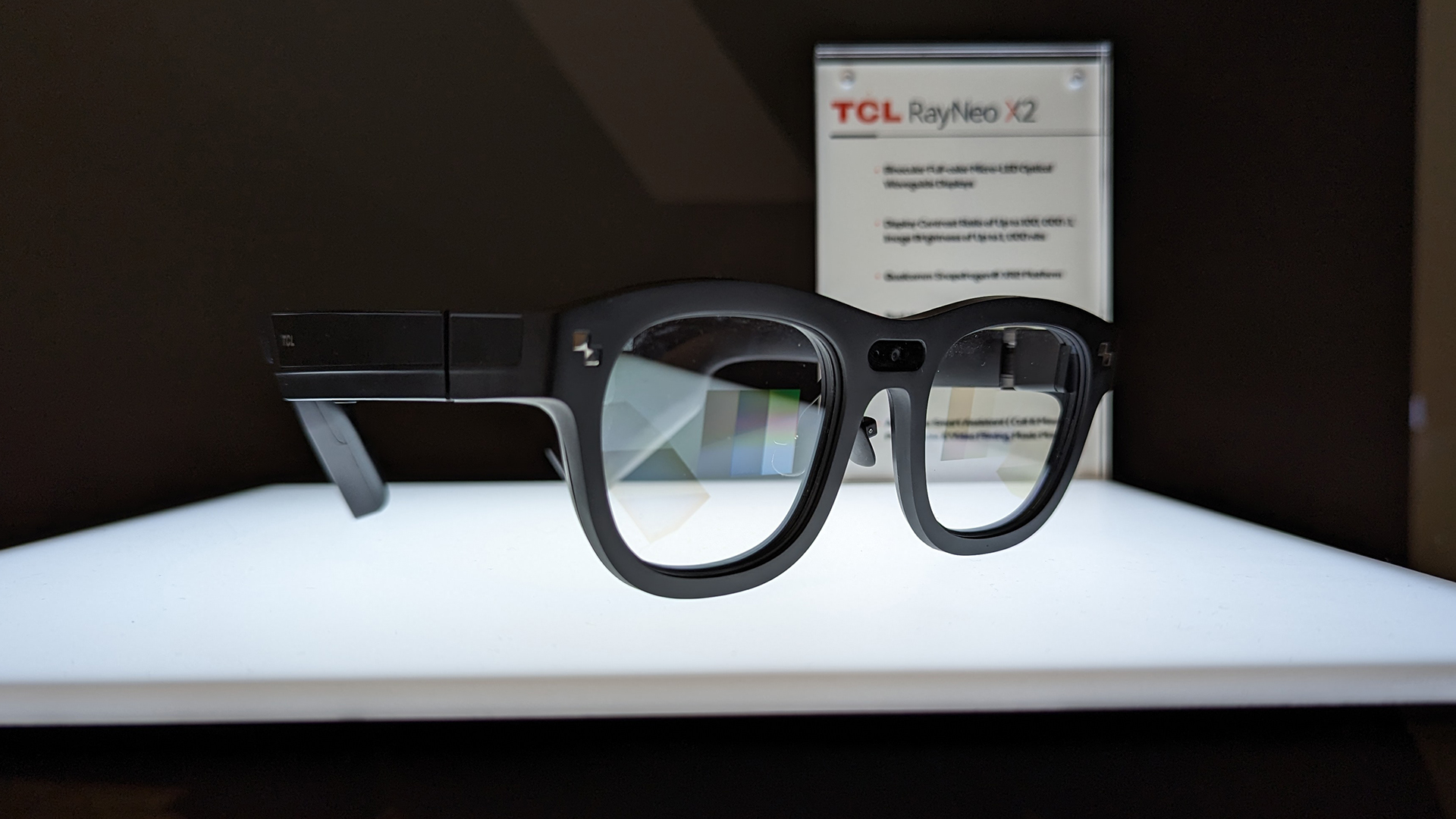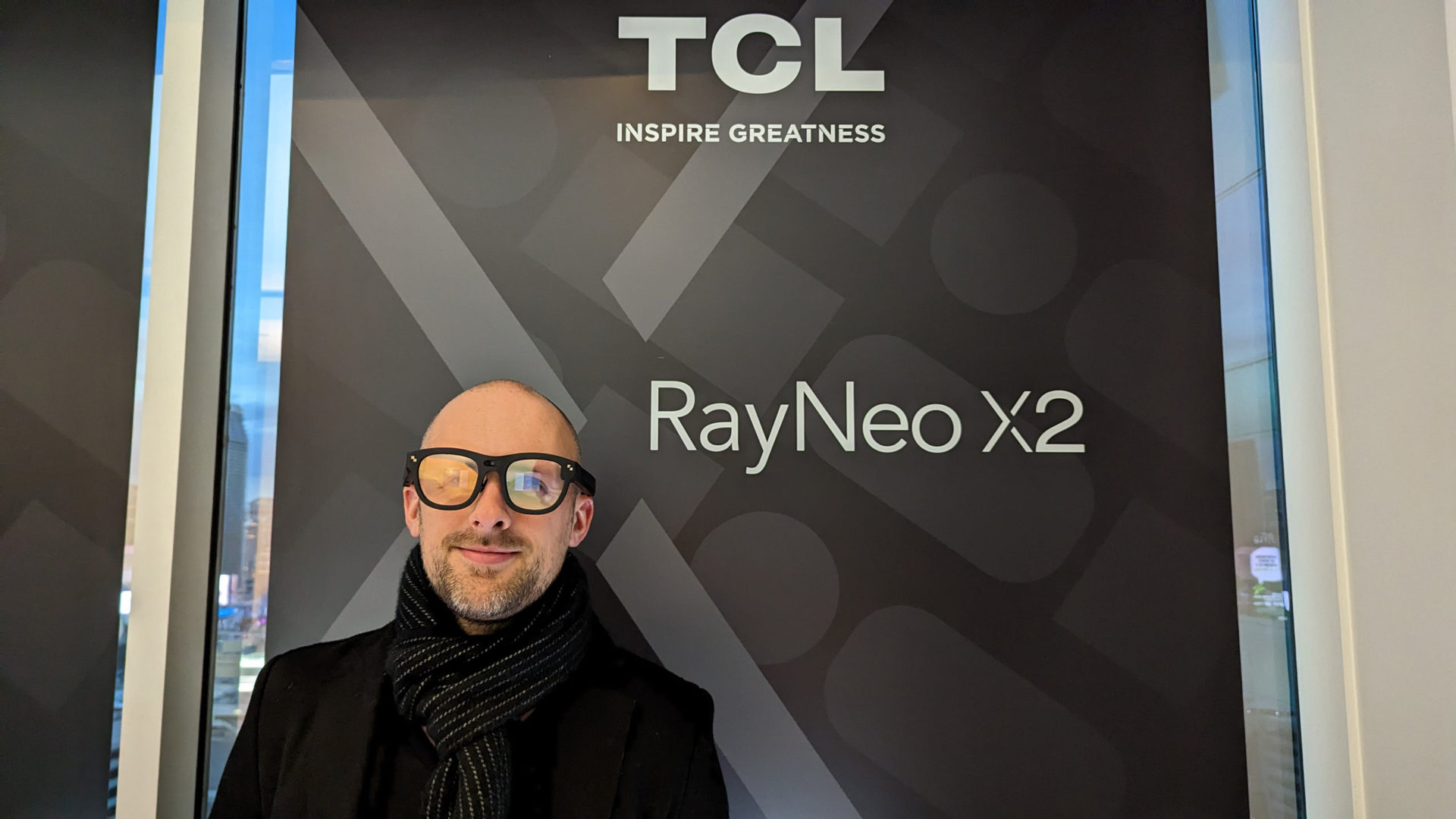TCL RayNeo X2 hands-on: Maybe the world is ready for Google Glass now?
Over ten years ago, in April 2012, Google announced a new piece of hardware called Glass which was designed to provide the user with an always-on heads-up display. It could capture photos and video, give navigation directions, and show notifications, all while being controlled via voice commands.
Almost as soon as Google announced Glass, the criticisms started rolling in. Would Google Glass destroy privacy as we know it? Would Glass-wearers be recording everything they saw? How long would it take before a Glass user walked off a cliff because they weren’t paying attention to the real world?
Glass was not a success. In 2015, Google discontinued the production of the device as a consumer product. Today, Glass lives on in the enterprise sector, with the most recent version — Google Glass Enterprise Edition 2 — landing in 2019.
But things have changed since 2015 and more and more companies are taking slow steps into the personal heads-up display and/or connected glasses space again. Today, at CES 2023, TCL unveiled its own Glass-esque AR smart glasses: the TCL RayNeo X2. Can these glasses succeed where Google couldn’t?
TCL RayNeo X2: The return of Glass?

C. Scott Brown / Android Authority
The biggest difference between Google Glass and the RayNeo X2 is the way the two products look. Where Glass was basically some metal wire and a tiny one-sided projector, the RayNeo X2 are big, thick, chunky glasses. This allows them to both act as real glasses and project high-quality imagery that appears over each eye.
However, the fundamental features of Google Glass reappear here in a more refined form. TCL showed me some real-time translation, in which English text appeared on the heads-up display as a person spoke to me in Chinese (similar to Google’s demo at I/O 2022). There’s also the ability to use navigation directions, listen to music, and capture photos and video. These are all features the original Glass could also do.
However, that shouldn’t diminish just how impressive these features are. The real-time translation allowed me to look at the speaker and read what they were saying, removing the impersonal solutions we rely on now, such as a human translator or a translation app. Likewise for the navigational features, which TCL explained allowed for real-time mapping of your environment through the camera and sensors on the RayNeo X2. Even something as simple as listening to music was cool, as I could hear it, but no one else around me could since it was playing through very tiny speakers pointed directly at my ears.
Related: No hablo Español? Don’t rely on Google Translate to save you
Inside the RayNeo X2 is the Qualcomm Snapdragon AR2 Gen 1 chip. This chip provides onboard processing speeds far faster than anything Google Glass could handle. Battery life will almost certainly be better, considering the more efficient chip and having a higher battery capacity.
However, the same limitations of Glass bogged down my hands-on experience with the RayNeo X2. Touch controls on the stems of the glasses were clunky and would likely take a while to master. TCL has a solution for this — an Oura-like ring controller. However, this was not available for me to try out during my demo time. Additionally, the glasses weren’t super comfortable and wouldn’t be considered fashionable by any stretch of the imagination.
This all shouldn’t detract from the truly amazing potential these glasses represent. But, just like in 2012, are we ready for this?
But is the world ready?

C. Scott Brown / Android Authority
Google Glass didn’t become a consumer hit because people simply weren’t ready for it. A lot has changed since then, though. Social media is more ubiquitous than ever, and the idea of being photographed and recorded everywhere you go isn’t nearly as shocking as in 2012. Snapchat has had some modest success with Spectacles, and there are more than a few companies out there gunning to become the first smart glasses hit.
Are you interested in owning AR glasses?
0 votes
The problem, though, is the barrier of entry. To commit to smart glasses like the TCL RayNeo X2, you need to be OK with spending a ton of money to wear cumbersome glasses that make you look silly and don’t do anything that your smartphone can’t either duplicate or at least come close to duplicating. Although TCL showed me a lot of cool tricks these glasses can pull, I didn’t see anything that made me say, “I must own these glasses.”
If you’re not like me and are very excited about these, you will be able to buy them — eventually. TCL is going to distribute the RayNeo X2 glasses to developers starting in the first quarter of 2023. Sometime later, the glasses will become available to general consumers in China. Once that happens, they will be relatively easy to get as an import. TCL is not wholly ruling out a global release either, but the company would not disclose pricing or any availability details quite yet.
For all the latest Technology News Click Here
For the latest news and updates, follow us on Google News.

